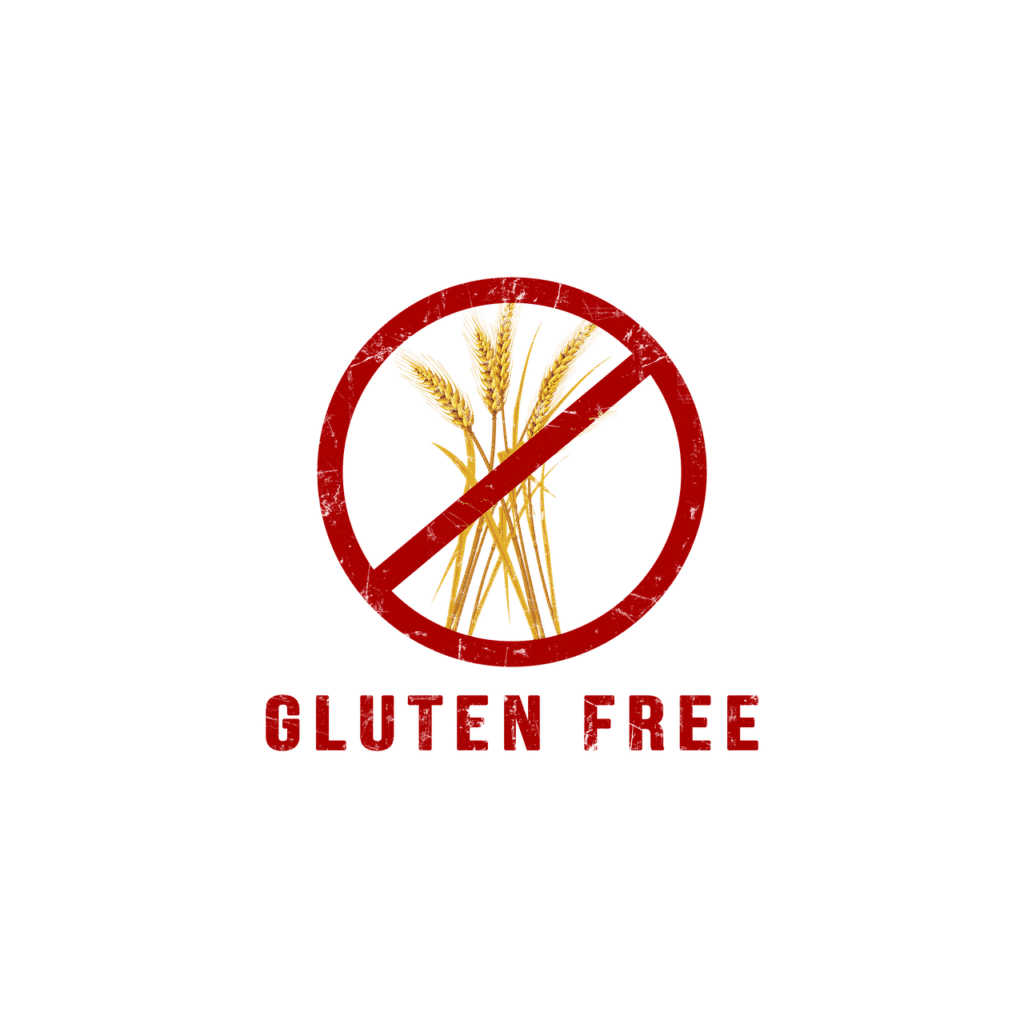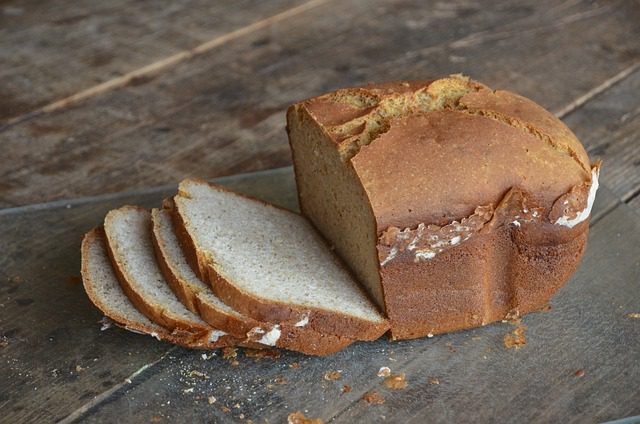Gluten-Free Bread: Is It Worth Making the Switch?
Gluten-free bread has gained popularity in recent years, with more and more people switching to this type of bread for various reasons. Some people do it for health reasons, while others do it for personal preference. Heck, some even do it so they look cool and can say they don’t eat gluten on social media (don’t be “that guy”).
In this article, we will explore the benefits of gluten-free bread and why it has become such a popular choice for many people.
What’s So Great About Gluten-Free Bread?
With all the buzz surrounding bread without gluten, let’s take a deeper dive into who may benefit from going the route of going gluten-free.
1. Those who suffer from Celiac Disease
First and foremost, gluten-free bread is beneficial for people with celiac disease or non-celiac gluten sensitivity. These individuals are unable to tolerate gluten, a protein found in wheat, barley, and rye, due to an immune response that causes damage to the small intestine.
Symptoms of celiac disease include abdominal pain, bloating, diarrhea, and weight loss, and it can lead to serious health complications if left untreated. For these individuals, a gluten-free diet is essential for managing the disease and maintaining good health.
2. Individuals with digestive issues
In addition to providing a safe and healthy option for people with celiac disease, gluten-free bread can also be beneficial for those with digestive issues or sensitivities to wheat.
Wheat contains fructans, a type of carbohydrate that can cause bloating and discomfort in some people. By switching to gluten-free bread, these individuals may experience relief from these symptoms.
3. A healthier alternative to regular bread
Another potential benefit of gluten-free bread is that it can be a healthier option overall. Many varieties of this bread are made with whole grains and other nutrient-rich ingredients, such as nuts, seeds, and vegetables, which can provide added fiber, vitamins, and minerals. These nutrients are important for maintaining a healthy diet and can help to support overall health and well-being.
4. Aid in weight loss
Some people choose to switch to gluten-free bread for weight management purposes. While it is true that gluten-free products can sometimes be higher in calories and fat compared to their wheat-based counterparts, this is not always the case.
There are many low-calorie, low-fat options available, and by choosing these options and practicing portion control, it is possible to use gluten-free bread as a part of a weight management plan.
5. Add variety to your nutrition plan
In addition to the potential health benefits, gluten-free bread can also be a tasty and convenient option. With the increasing demand for gluten-free products, there are now a wide variety of these breads available, including sandwich bread, rolls, and even specialty breads like bagels and croissants.
Many of these products are just as delicious and satisfying as traditional wheat-based bread, making it easy for people to enjoy a variety of foods while following a gluten-free diet.
What’s the Difference Between Regular Bread and Gluten-Free Bread?
The main difference between regular bread and gluten-free bread is the type of flour used in the recipe.
Regular bread is typically made with wheat flour, which contains the protein gluten. This bread, on the other hand, is made with alternative flours that do not contain gluten, such as rice flour, almond flour, or sorghum flour.
Another difference between the two types of bread is the texture and consistency. Gluten-free bread can sometimes have a denser texture and may not rise as much as regular bread due to the lack of gluten. It may also have a slightly different taste and appearance.
Is Regular Bread Nutritionally the Same as Gluten-Free Bread?
The short answer to this question is no. Nutritionally, regular bread and gluten-free bread are different.
Related Article: Melt in Your Mouth Macro-Friendly S’mores Protein Bread Recipe (Not gluten-free)
Gluten-free bread can sometimes be lower in fiber and protein compared to regular bread, although this is not always the case. Many of these products are now made with whole grains and other nutrient-rich ingredients, which can help to make up for these differences.
It is worth noting that while this bread can be a healthy and convenient option for many people, it may not be suitable for everyone. Some people may experience digestive issues or other adverse reactions when consuming gluten-free products, and it is always a good idea to speak with a healthcare professional before making any significant changes to your nutrition plan.
What Does the Research Say?
There have been several studies conducted on the health effects of gluten-free bread. Here are a few key findings:
- A study published in the American Journal of Clinical Nutrition found that a gluten-free diet may lead to a lower fiber intake and certain micronutrients, such as iron and B vitamins. However, the study also found that this can be mitigated by choosing gluten-free products that are fortified with these nutrients or by including other sources of these nutrients in the diet.
- A review published in the Journal of Human Nutrition and Dietetics found that while gluten-free bread can be a healthy option for people with celiac disease, it is crucial to choose products that are made with whole grains and other nutrient-rich ingredients in order to ensure an adequate intake of nutrients.
- A study published in the Journal of the American Dietetic Association found that while this bread can be a healthy option for some people, it is vital to be aware of the potential for gluten-free products to be higher in calories, fat, and added sugars compared to regular wheat-based bread.

Overall, it is important to choose a variety of gluten-free products that are made with whole grains and other nutrient-rich ingredients in order to ensure an adequate intake of nutrients. It is also imperative to be mindful of portion sizes and to check labels for added sugars and other potentially unhealthy ingredients.
RELATED: Making a Healthy Homemade Sourdough Bread Recipe
As with any nutritional change, it is always a good idea to speak with your healthcare professional before making any significant changes.
What Brands Make the Best Gluten-Free Bread?
There are many brands that make high-quality gluten-free bread. Some popular options include:
Udi’s
This brand is known for its wide variety of gluten-free bread, including sandwich bread, rolls, bagels, and even pizza crust. Many people find their products to be tasty and easy to digest.
Canyon Bakehouse
This brand offers a range of gluten-free bread, including sandwich bread, bagels, and English muffins. Their products are made with whole grains and are free of dairy, nuts, and soy, making them suitable for people with multiple food sensitivities.
Glutino
This brand offers a variety of gluten-free bread, including sandwich bread, bagels, and rolls. They also have a line of frozen bread products, such as pizza crusts and breadsticks, which can be convenient for those with busy schedules.
Schär
This brand is known for its high-quality gluten-free products, including a wide range of gluten-free bread, such as sandwich bread, rolls, and baguettes. They also offer a variety of specialty breads, such as focaccia and ciabatta.
Bob’s Red Mill
This brand is well-known for its whole-grain products, including a line of gluten-free bread mixes. Their bread mixes are easy to make at home and allow you to customize the ingredients to your liking.

It is worth noting that while these brands are highly regarded by many people, what works best for one person may not work as well for another. It is always a good idea to try a few different brands to see which one works best for you.
Is There a Price Difference Between Regular and Gluten-Free Bread?
Yes, there is often a price difference between regular and gluten-free bread.
In general, gluten-free products can be more expensive than their wheat-based counterparts due to the cost of alternative flours and other ingredients, as well as the additional processing and handling that may be required.
However, the price difference can vary depending on the specific brand and type of bread, as well as where it is purchased. Some brands of gluten-free bread may be more expensive than others, and prices can also vary depending on whether the bread is purchased at a specialty store, a natural foods store, a traditional grocery store, or online.
It is worth noting that while gluten-free bread can be more expensive, it is possible to find affordable options. Many supermarkets and stores now carry their own brands of gluten-free products, which can be less expensive than name-brand options. It is also possible to save money by making your own gluten-free products at home using a mix or a recipe. With a little bit of shopping around and planning, it is possible to go zero gluten without breaking the bank.
Is Gluten-Free Bread for Everyone?
While gluten-free bread has many benefits, it is important to note that it may not be suitable for everyone. Some people may experience digestive issues or other adverse reactions when consuming gluten-free products, and it is always a good idea to speak with a healthcare professional before making any significant changes to your nutrition.
FAQ
Gluten is a group of proteins found in grains such as wheat, barley, and rye. It helps give bread and other baked goods their structure and texture, but can cause health problems for people with celiac disease or gluten sensitivity.
No. Gluten-free bread can sometimes be lower in fiber and protein compared to regular bread, although this is not always the case. Many gluten-free products are now made with whole grains and other nutrient-rich ingredients, which can help to make up for these differences.
It is worth noting that while gluten-free bread can be a healthy and convenient option for many people, it may not be suitable for everyone. Some people may experience digestive issues or other adverse reactions when consuming gluten-free products, and it is always a good idea to speak with a healthcare professional before making any significant changes to your nutrition plan.
Yes, gluten-free bread is generally more expensive. Gluten-free products can be more expensive than their wheat-based counterparts due to the cost of alternative flours and other ingredients, as well as the additional processing and handling that may be required.


*Disclosure: This article may contain affiliate links or ads, which means we earn a small commission at no extra cost to you if you make a purchase through these links. These commissions help support the operation and maintenance of our website, allowing us to continue producing free valuable content. Your support is genuinely appreciated, whether you choose to use our links or not. Thank you for being a part of our community and enjoying our content.
PLEASE CONSIDER SHARING THIS ON YOUR SOCIAL MEDIA TO HELP OTHERS LEARN MORE ABOUT THIS TOPIC.





